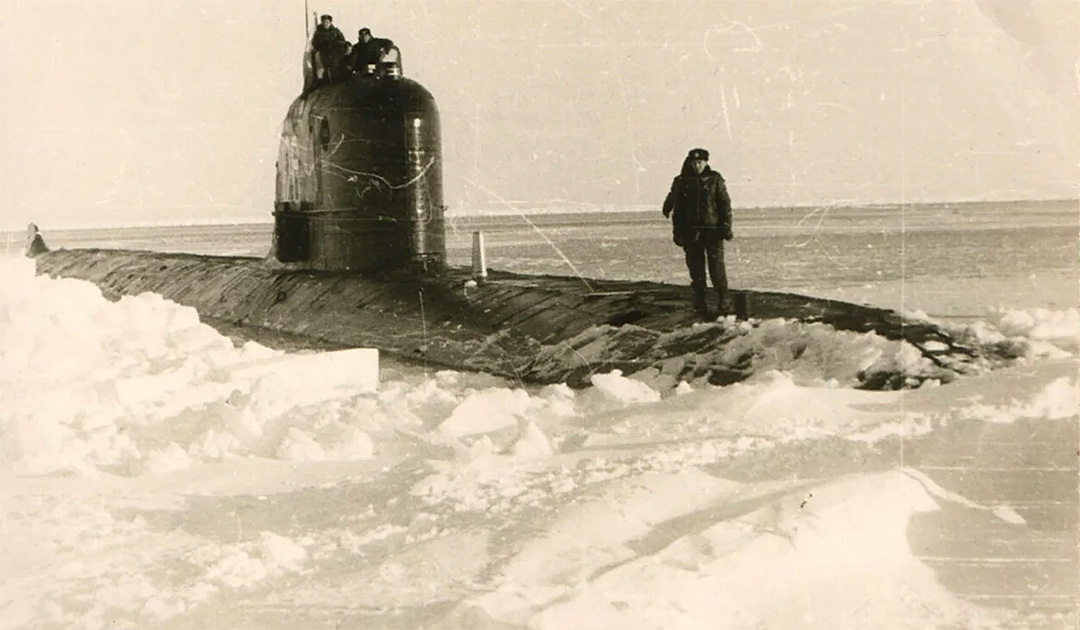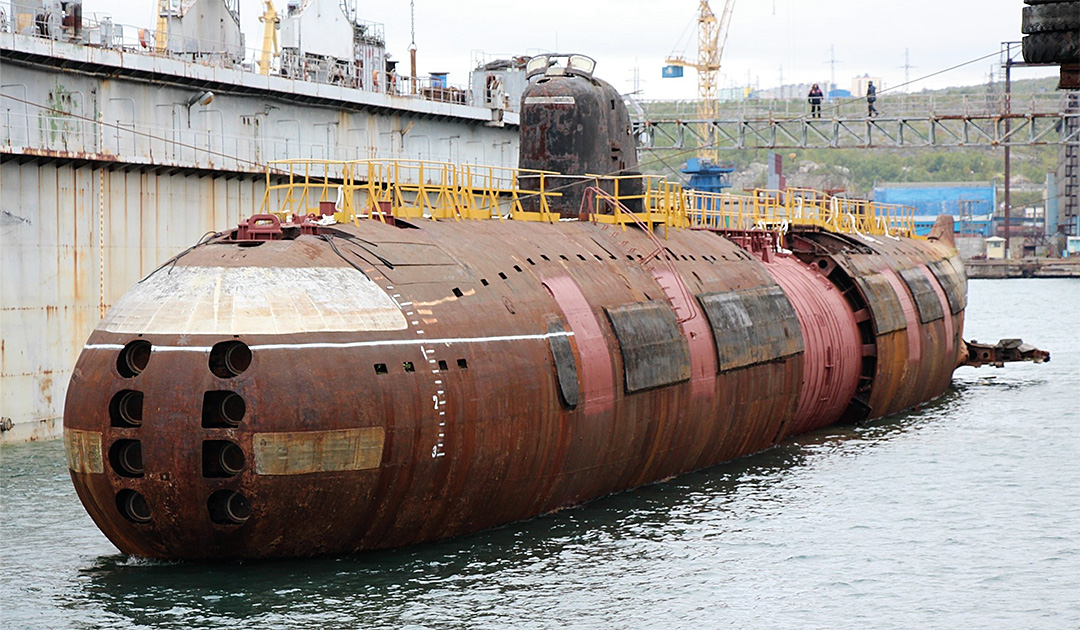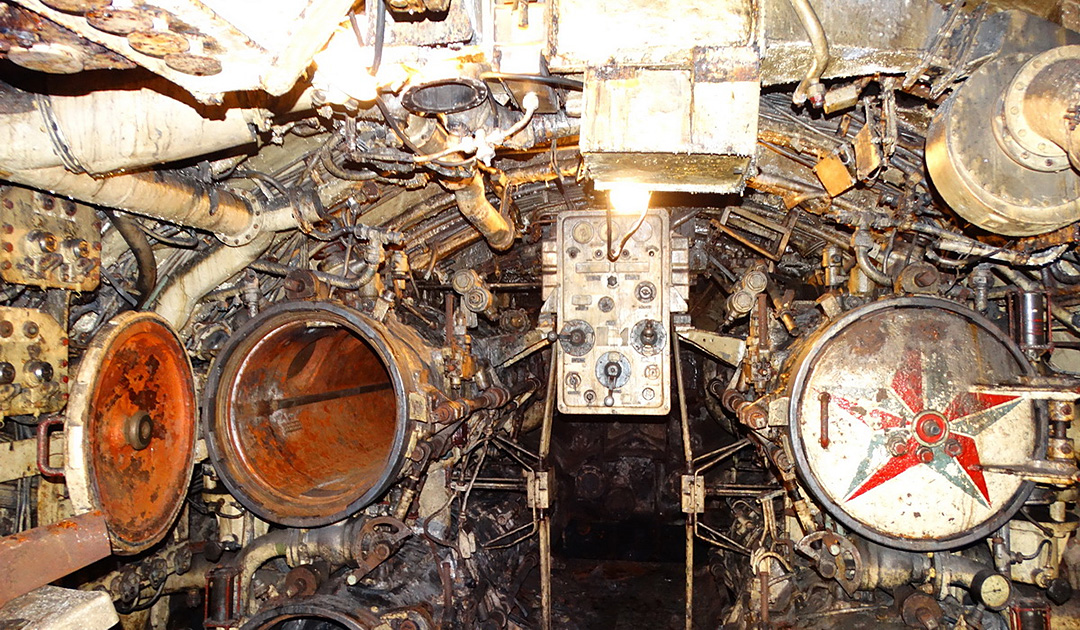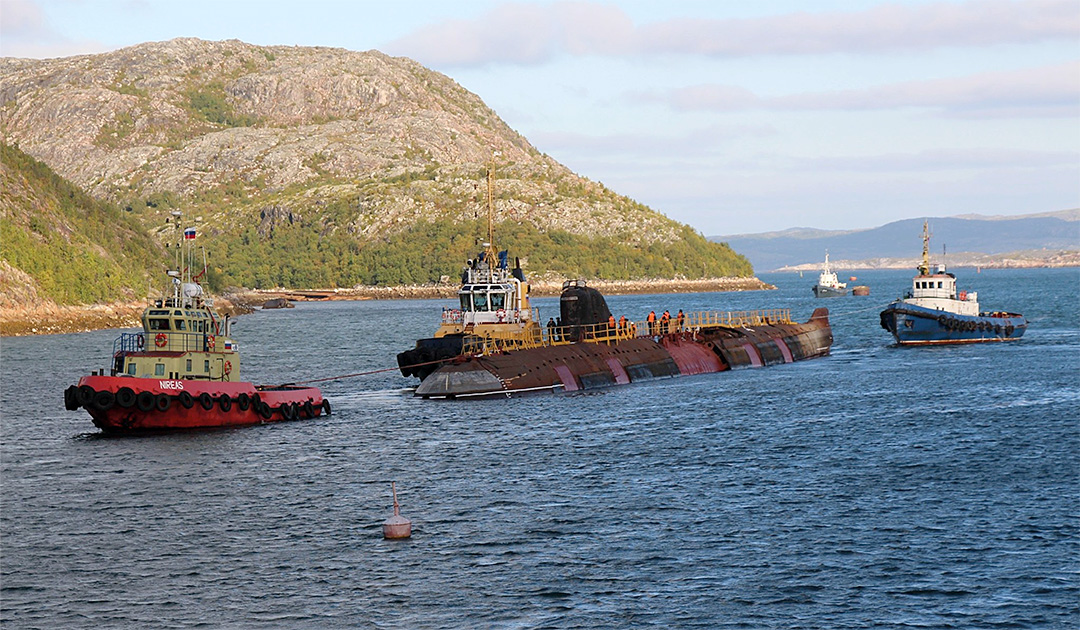
Earlier plans to place the first nuclear submarine K-3 “Leninsky Komsomol” as a museum ship next to the first nuclear icebreaker “Lenin” in Murmansk were abandonded. It has been decided now that the submarine will become a major attraction of the planned Museum of Naval Glory in Kronstadt. This was announced by the press service of the Nerpa shipyard at the end of October 2020. The K-3 nuclear submarine has been located at the Nerpa shipyard in the Murmansk region since 2005.

“It is planned that the first nuclear submarine K-3 “Leninsky Komsomol” will become the main attraction of the exhibition of the planned Museum of Naval Glory in Kronstadt.
The Press Service made it clear that the decision was taken at a meeting involving representatives of the Navy’s technical management. The day before, representatives of the fleet, design organizations and plant specialists visited the mooring site of the “Leninsky Komsomol”, examined the interior of the ship, assessed the condition of the hull structures and the scope of the work to be carried out.
“The work on the restoration of the hull of the submarine, the production of support points and the preparation of the transport of the submarine by cargo ship to the Baltic Sea will be carried out by specialists of the shipyard. The documentation of the “Leninsky Komsomol” to be produced for the museum is taken over by SPMB Malachite, where the submarine was once developed,” explains the press service.
The author of the project for the development of the museum and the historical center in Kronstadt is the independent non-profit organization “Island of Fortresses”. According to a press release, the K-3 “Leninsky Komsomol” will be able to receive its first visitors as a museum exhibition from 2023 on.

More about the submarine K-3 “Leninsky Komsomol”
The decision to start building a nuclear submarine in the Soviet Union was made in the early 1950s. Stalin himself signed a decree on September 12, 1952, “On the Design and Construction of Object 627”. Construction of the nuclear Submarine K-3 “Leninsky Komsomol” commenced on September 24, 1955 in Severodwinsk at Plant No. 402 (now Sevmash Shipyard) and was launched on August 9, 1957. It was commissioned by the Navy on June 4, 1958.
On June 17, 1962, the K-3 reached the North Pole– a technical feat that had been achieved nearly four years earlier by the first U.S. nuclear submarine USS Nautilus. The submarine was also able to appear directly at the pole.
In 1991, the submarine was released from the Northern Fleet and delivered in 2005 from the Gremicha submarine base to the port area of the Nerpa shipyard, where a planned scrapping was imminent.

The Nerpa shipyard was the first to begin the attempts to rescue the submarine after expressing the idea of turning the boat into a museum. In 2010, the Commander-in-Chief of the Navy made the final decision not to dispose of the first nuclear submarine, the K-3 “Leninsky Komsomol”, and to keep it for history.

Before Nerpa made a final decision on the financing of the conversion of K-3 into a museum, the shipyard carried out work to dismantle the reactor area to ensure the submarine’s radiation safety. A replica of the reactor area was built to replace the cut-out piece to restore the original appearance of the boat. On March 19, 2019, the reconstruction work on the submarine was completed. All outer openings have been welded. The boat is now located in the water area of the Nerpa shipyard in Sneshnogorsk, 25 km from Murmansk.

Serious incident on the submarine
On September 8, 1967, a fire started on the K-3 in the Norwegian Sea northeast of the Faroe Islands in the first compartment, the torpedo room. The fire spread to the second battery compartment. After that, smoke began to flow into the third compartment.
The situation was saved by the commander of the second compartment, Captain Lieutenant Anatoly Malyar, who managed to lock the hatch from the inside before his death, thus preventing the further spread of the fire.
In doing so, he saved the submarine from going down. Nevertheless, 39 sailors were victims of the tragedy. The boat made an emergency surfacing and the fire was extinguished. Rescuers soon arrived at the submarine, but the crew refused to leave the boat. The “Leninsky Komsomol” reached the base independently of aid.
Despite the large number of dead sailors, critical voices about the submarine were avoided and it was put back into service after the renovation.
Just 45 years later, a full investigation was carried out looking into the circumstances of the incident. As a result of the work of the Expert Council of the Russian Navy in 2012, it was stated that the cause of the accident had been of technical nature. Liquid from the hydraulic system had spilled onto an electric lamp. The actions of the staff prevented the boat from sinking and the development of a technical accident into a man-made disaster. Instead of a copper seal, a paronite-fabricated seal had been used, which was not designed for higher pressures.
The decree of the President of the Russian Federation, Vladimir Putin, on September 1, 2014, posthumously awarded the Order of Courage to the 39 sailors who had died in the accident.
Heiner Kubny, PolarJournal






kinda like what you published actually. it just is not that easy to find even remotely good stuff to read (you know READ! and not just browsing through it like some uniterested and flesh eating zombie before moving on), so cheers man for not wasting my time!